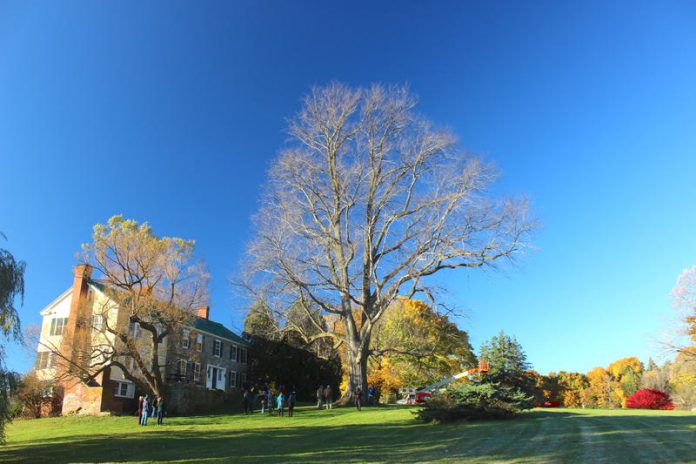CHARLOTTE, Vermont – The elm tree stands more than a hundred feet tall towering above the other trees in Charlotte, but not for much longer.
Tuesday it was time to say goodbye to a tree that has likely been around longer than the state of Vermont.
“It’s been a monument for everybody in this community for a long time,” said David Garrett, of Charlotte, who owns the property that was home to the majestic tree.
The tree, which was believed to be 250 or 300 years old, had to go because it died of Dutch elm disease. That killer fungus has stolen many elms from American landscapes.
“It’s always been here,” Garrett said. “It’s like the anchor. If you go outside, for miles away, if you get up high, you can see this tree. It’s the highest thing on the entire peninsula. You can go across the lake to New York State and still see this tree.”
The tree will now help save other elms.
Furniture maker John Monks, of Bristol, took away much of the wood. His business, Vermont Tree Goods, makes single-slab tables, benches, and other products that give a second life to heirloom hardwoods that reached the end of their growing years.
Most of the Charlotte elm will become furniture, with a portion of the sales benefiting the Nature Conservancy’s ongoing efforts to restore elm populations.
“With a little bit of effort, we can maintain what we have here,” Monks said. “Hopefully, we will maintain the elm tree as part of our environment for generations to come.”
“The elm is a special species that occupies a unique ecological role,” explained Gus Goodwin, of the Nature Conservancy. “And that role is tied to water quality and flood resilience.”
Goodwin noted that elm trees have an important role to play for animals, providing nesting sites for birds that enjoy high perches. He also said the elm tree is an icon of American street design, when many elms once lined streets named after the tree.
Before work began to remove the tree, neighbors gathered at its base to give it a “group hug,” recognizing its status as a landmark in that part of Charlotte.
















Will they consider planting another tree in it’s place?